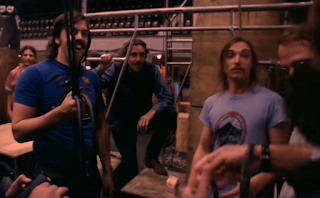This is a collection of screenshots not used in the Who's Who guide:
We compiled more shots than we could use in the post, so these are some of the "outtakes."
These aren't meant to represent the movie as a whole - they were simply alternate candidates to include in the guide, when picking one shot for each person proved difficult. These pics are weighted around band & crew (for most of the other people we only took one shot). You could easily get a hundred other good shots from the movie...
1. THE BAND
Jerry Garcia
Bob Weir
Phil Lesh
Bill Kreutzmann
Keith Godchaux
Ned Lagin
Steve Parish
BootsJoe WinslowRamrod
Betty Jackson and babyRon Rakow
Group shots:Others



































































